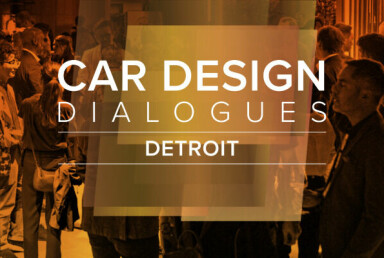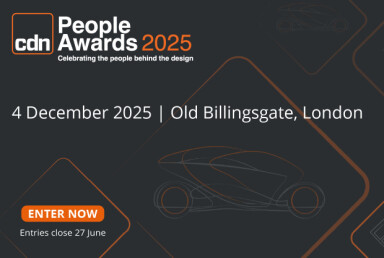LA Auto Show
Los Angeles auto show highlights

CDN returns to AutoMobility LA to find interesting new offerings amid headwinds in the industry
It had been predicted that this year’s Los Angeles auto show would be a quiet affair. But fortunately, some interesting a debuts, a few cool concepts, and a slew of restomods made the trip more than worth it. We review some of the overall trends and some notable cars at show and hope for the best next year, when the venue will be fully engulfed in construction ahead of the 2028 Olympics.
Trends
Not Dead Yet
American humorist Mark Twain once quipped, “the report of my death was greatly exaggerated.” And so it is with motor shows. After the tragic demise of the Geneva Show, it had been assumed that auto shows were a thing of the past. But the Asian shows have shown remarkable resilience, especially the Japan Mobility Show, which has given hope to the whole industry. In Los Angeles this year, we saw the return of several marques after absences of a year or more, leading us to hope that the worst is behind us. Still, one couldn’t help but notice that several OEMs were represented by local dealers, rather than the larger corporate mothership.

Off-Road
It was Gertrude Stein who said, "In the United States, there is more space where nobody is than where anybody is." At the Los Angeles Show, this quote is celebrated by the large number of off-road vehicles, in both standard trucks and camper conversions, that filled many of the show stands. The pandemic accelerated the off-road trend, but it was well underway before. The offerings, however, have gotten much more sophisticated with many overland vehicles matching or surpassing traditional RVs.

Hybrids
EVs may have been all the rage five years ago, but a distinct chill has settled over the sales of electric cars in the past couple of years, and the increasing number of hybrids on the stands — from economy cars to big SUVs — shows the trend. It’s not that EVs are dead, Lucid, Rivian and Scout each had a presence at the show — but their futuristic and eco-conscious image is diminished by changing regulatory climate and by the inexcusable lack of an entry-level electric car in the US Hybrids have stepped in to fill the gap, and are getting better with each generation. A Toyota Prius can run on electric power for up to 39 miles, making it a de-facto electric if you are do not have a long commute.
Affordability
The monster under the bed for the automotive industry is the lack of entry-level cars, at least in the US. The domestic OEMs are the worst offenders in this regard, having killed smaller, affordable cars that get young buyers into the market, and into brand identity and loyalty. Japanese and Korean brands have been much better at servicing this end of the market, but tariffs are taking their toll — even though many of their cars are now built in the US. A decade ago, it was common for some of the cars to have a sticker in the window showing the price of the car. Now, there are no stickers. No one wants to reveal the awful truth. But the problem remains, and will not disappear anytime soon. A new car is a now luxury purchase, in a country where car ownership is practically a requirement.
Cars of Note

Hyundai Crater Concept
Certainly the most talked-about vehicle at the show, the Hyundai Crater is a compact, electric, AWD off-road adventure vehicle similar to the Ford Bronco, Jeep Wrangler and the forthcoming Scout Travelall. Designed at Hyundai’s Irvine Design Centre, the Crater is an automotive answer to the question posed by Hyundai head of global design, SangYup Lee: “What does freedom look like?”
Some might say a sunny convertible, but Lee’s design team decided leaving the road behind altogether might be a more powerful expression of freedom. Cue the Hyundai Crater.
The exterior is a composition of chunky massing, faceted accents and pixelated lighting signatures. There is a massive skid plate underneath for battery/motor protection, and approach and departure angles are ideal for off-road conditions. A pair of cables running from hood to the top of the windscreen help brush aside tree limbs and other obstructions.

We spoke briefly with SangYup Lee about the design and he graciously gave us a few moments of his time in what was a very busy day. He pointed out that the exterior is not just about the chunky, chiseled massing but about Hyundai’s mastery of steel as a material, and the ability to experiment with new folding, bending, and fabrication techniques — all part of the “Art of Steel” design language.
The interior is an interesting black and orange, with leather and Alcantara on the seats and circular, tube-like elements throughout with various functions from armrests to headrests to fire extinguisher, to dashboard. A pillar-to-pillar HUD handles instrumentation and information, while small screens are detachable for games or to mount on a bicycle.
The interior has an integrated tube frame and rollbar with etched handgrips for young ones to grab while entering and exiting the vehicle. There is even a cartoon-like character, “Crater Man” that can be found on seat buckles, tow grips, on the screens, and in other places. It is part “Where’s Waldo” and part vehicle mascot that adds a bit of whimsy to an aggressive, rugged design.
We are hoping to see the Crater soon added to Hyundai’s growing truck line.

Kia Telluride
Perhaps the most significant production vehicle introduced at the show, the Telluride is Kia’s big family SUV and is now about two inches larger in all directions.
With a bigger, mostly unadorned body, the theatrics seem centered on the front mask, where Kia continues to experiment with reinventing the front of a vehicle, moving beyond traditional understandings of grille, headlight, and signal. It is especially significant given that this is a big family car and a more traditional front might be more appealing to the a family buyer.
Inside there is a host of technology improvements as well as improved seating for up to eight people, along with the requisite panoramic roof and creature comforts. The Telluride has surpassed all sales targets since its introduction and we believe this new generation will easily surpass its predecessor.

Corvette CX Concept
Chevrolet’s Corvette CX is an electric hypercar concept that imagines a Corvette in the future with a monster 2,000 horsepower, all-wheel drive powertrain, and a host of aerodynamic features, including an innovative vacuum fan system to keep it planted on the road.
The interior is accessed by a canopy and focuses on the driver, with innovative features and a HUD that allows the driver to totally focus on the road (or track) ahead, while maintaining tactile control through the steering yoke.
We caught the Corvette CX in a quiet moment at the show, and it certainly was a powerful image of Corvette-as-Hypercar. Were it ever to be built, it would have to be a separate product line, as the Corvette is a (relatively) affordable home-grown sports car, within reach of aspirational buyers. A hypercar would irrevocably change that. Still, a great concept to see.

Volkswagen Azul
At the Volkswagen stand, the official presentation was about the Golf GTI/R, which won a “Car of the Year” award from an American magazine. But the real story was a few steps where a new ID Buzz sat next to a 50 year-old T2 transporter. The old-timer is a local celebrity, having survived the Palisades wildfire. After the smoke cleared, an Associated Press photographer captured a photo (above) of the bright blue Bus sitting intact among the grey and brown ruins.

Volkswagen contacted the owner, Megan Weinrub and offered to assess the T2, nicknamed ‘Azul’ by Ms. Weinrub. Although Azul looked miraculously intact from the Associated Press photo, the damage was severe. Volkswagen took Azul to its Engineering Centre in Oxnard, California (where its design centre is also located) where the microbus was restored from bumper to bumper.
Azul made her debut at the LA auto show, and will then be moved to the Petersen Automotive Museum until January and then will be returned to her owner. Ms. Weinrub has stated that Azul’s resurrection has helped her re-evaluate her own life. She’s not revealing her plans, but we can be assured Azure will be by her side. A perfect Hollywood ending.

Afeela
The Afeela collaboration between Sony and Honda was presented at CES as a concept headed for production, and with the opening of several Afeela stores in California, it does appear destined for the marketplace in 2026. We visited the Beverly Hills store and checked out the Afeela 1.
The exterior styling is meant to be simple, an oval with minimal character lines and no complicated surfacing. Exterior lighting signatures are enfolded into the body — nothing dramatic here, just functional. The front grille has been replaced by a “media bar” that displays messages to passers-by.
The interior is minimalist, focused on inobtrusive comfort and total immersive environment. A pillar-to-pillar screen stretches in front of the driver. At the right and left are rearview cameras (standard mirrors are mounted on the exterior) and in between is a screen that shows information, but also movies and games as "screens with in a screen." A yoke, rather than a steering wheel, assures uninterrupted views of said screen.
Afeela is marketed as a vehicle for total technical personalisation, like one’s smartphone. But is it too late? Tesla, and Lucid, and others are already well established. Afeela will have to stake a claim for a distinctive niche in the marketplace.

Summing it up, the 2025 LA auto show was more than expected, but problems in the industry, particularly among the American OEMs, cannot be completely disguised. The desperate remodel of the Los Angeles Convention centre ahead of the next Olympics in some ways mirrors the desperate remodel needed in the auto industry. For both projects, vision and massive execution are needed. Let’s hope there is plenty of both in the days ahead.



